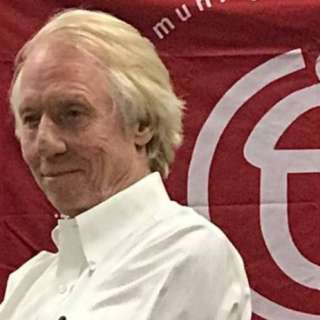Advertisement
Part Two (of Four)
In the shadows of democracy (cont’d.)
City Council appointments and elections
The process of filling public offices, especially City Council, is a key element in the reproduction of undemocracy from one iteration of office-holders to their successors. The city boosters in the media never comment on this.
Until the election of Elizabeth Brown in 2015 (reelected in 2019), no Council member had been elected without first being appointed to office since Mary Ellen O’Shaunassey in 1995. In 2019, Brown did not even complete nonpartisan Ballotpedia's Candidate Connection survey.
More recently, Shayla Favor and Rob Dorans gained their seats by submitting 500-word essays and resumes. They were not elected to office
These appointees, including mayors, typically rise from their “holding pens” (to quote one long-time civic activist) or school practice yards in the Franklin County Board of Elections, Columbus Board of Education, or minor City positions. They do not join the ranks of the rulers first by popular election.
That partisan (falsely called “nonpartisan”), self-reinforcing practice--recently moderate (not progressive) Democrats--combines with difficult requirements for new candidates to gain certification to run and inadequate coverage by local media to make the tight circle extremely hard to crack, whether outside candidates are conservative, centrist, or progressive. Self-perpetuation or internal reproduction is central to the undemocratic practice of the Columbus Way.
Once appointed, members “are trotted around town for ‘safety’ meetings then host office hours patterned after (County Auditor) Michael Stinziano’s example” (my knowledgeable local sources report). After members are seated, they have a usually unsurmountable incumbent advantage in fund raising, coverage across the media, and joint sloganeering—as if they were a party slate. Democrats present themselves as progressives when they clearly are not. The advantage is estimated to be at least 60 percent. No outside Democrat, Republican, Independent, or other candidate has a realistic chance to defeat them.
This is the Columbus Way of political reproduction, cemented in the Council’s centuries-out-of-date, unrepresentative government and elections. Why would any sitting member want to change these arrangements? What could be better for the constant presence, influence, and power of private interests?
The self-reproducing system does not stop with the completion of terms in office. Some Councilors move on to other city or state elected office or move laterally, if not always ethically, to positions with private corporations that had lobbied them and contributed to their election campaigns.
The major example today is former mayor Michael Coleman, whose questionable legacy is marked with downtown signboards and parklets. As head of the blurred, public-private Columbus Downtown Development Corporation that lobbies for “developments” that have no basic urban planning or aesthetic rationale, Coleman exerts greater influence than he had as mayor. He shows no greater appreciation of either the public or the city as a whole.
Coleman and his partners operate as unregistered lobbyists for approval of proposals and code variances from unregulated developers. That is the only way that a 32-story tower gains approval for construction beside the historic North Market, which once headquartered City Hall. Or that the notion of a taller structure on the edge of the Scioto Mile on downtown’s attractive and popular western edge is even floated publically.
No trained, reputable planner or city servant would approve such unaesthetic, inappropriate corridors of congestion. Indeed, all anyone—including City Councilors or the mayor—has to do is to stand beside the present structures and turn in a circle with eyes open. None of the confused, public-private partnerships in boosterism and denial of democracy accept efforts to exchange ideas or accept constructive criticism. I, and others, have tried.
Former Councilors Zach Klein and Michael Stinziano are now City Attorney and Franklin County Auditor, respectively. Both apparently aspire to higher political office.
The City’s revolving doors advance private development (including lobbying and leadership of former officials) that does not benefit the larger community The nonprofit, for-profit development agents of the Columbus Way that overlap and reinforce these associations include the Columbus Partnership, Columbus Foundation, Columbus Metropolitan Club, and Campus Partners for Urban Community Development and other arms of the octopus-like Ohio State University. Campus Partners underwrites at great financial loss the construction of a privately capitalized and owned wall around its “campus in the city.” City Council and a wide range of its departments support private efforts in ways too numerous to count.
Paralleling and inseparable from the maintenance of nonrepresentative government, the direct and indirect influence of developers, large corporations, landlords, merchants groups, and large public institutions is exceptional when compared with other cities. This is one of the few ways that Columbus is significantly different. The physical city and the social, cultural, and economic city all display the scars.
Residents of historic neighborhoods
In much of my analysis, I discuss basic democratic rights that Columbus residents never had.
In a series of essays (see references below), I detail the many ways in which the City, Ohio State University, and large developers and landlords actively and passively contribute to neighborhood destruction, especially in the University District. In different but corresponding ways, Franklinton, Weinland Park, Linden, the Hilltop, and other long-established central areas reveal similar stories. I explore Franklinton in two essays. These cases exemplify but are an incomplete roster of Columbus’ violations of the rights of its residents.
Every few years, mayor and Councilors mutter unclearly and falsely that all development favors everyone. None of them are sufficiently sophisticated to parrot even long-ago disproved “trickle down” economics. Not even reputable, conservative economists agree with this unfounded, ideological sloganeering. These misunderstandings flow from the lips of self-proclaimed but self-contradictory, “progressive” Democrats.
For example, following the victories of four Democratic incumbents in November 2019, the winners misleadingly celebrated: “‘This is an exciting time to live in Columbus,’ Ginther told a crowded ballroom…, adding that city leaders are laying a foundation ‘that works for all of us,’ with higher-paying jobs, affordable housing and public safety ‘that works for every person in every neighborhood….’ [Elizabeth] Brown said…‘The next four years is [sic] about continuing to move our city forward,’ adding officials can’t rest on their accomplishments. She personally wants to level the playing field for families so they can earn a living wage….” Tired, mythical and mixed metaphors do not make for facts. Nothing could be farther from realities on the ground before and after that election.
In 2022, Ginther continued his trademark, awkward, and fact-free sloganeering. He declared first that Columbus has raced ahead in the second year of the Covid-19 Pandemic. He next opined that identity-less Columbus is now “Opportunity City.” It did not occur to him to ask the most obvious and important question: What kind of opportunity and for whom?
Residents’ lack of basic rights
Charter reform
Only in 2021 was City Council persuaded that its Charter, originally adopted in 1914 and amended in 1933, needed thorough revision. At present, neither the still-in-effect Charter nor any information on the current revision process appears on the City’s chaotic website.
In a well-managed city, charter review, updating, and revision occur on a regular basis. Equally striking, pressure for revision in Columbus does not come from the public, whose interests are not served by either the letter of the law or the all-but-automatic granting of variances to corporations, developers, large landlords, and large institutions without public or formal review.
The practice of zoning enforcement in Columbus translates to holding private interests—that is, the rights of developers and corporate landlords—superior to individual interests of both homeowners and tenants, especially in long-standing neighborhoods, irrespective of the fact that the laws themselves are long out-of-date.
Code inspectors and enforcers ignore those laws, greasing the path of neighborhood destruction especially actively over a period of about four to five decades from the last quarter of the 20th century to the present. As codes and Charter are finally revised, we are told, private interests will call the shots and guide the process. That is the Columbus Way.
This is how historic residential areas are destroyed, divided, and disrupted. This is how NorthSteppe Realty, HomeTeam Properties, and other giants were created and allowed to violate countless laws including their own signed contracts with tenants. These operations, ranked lowest by the OSU students who completed surveys, are facing countless complaints and individual and class-action lawsuits. Yet, in exchange for substantial donations to the university, they are allowed to claim dishonestly, confusing students and their families, that they are “OSU Student Housing.”
OSUlive and OSUproperties, two of the large landlords/property managers who violate sign ordinances most frequently with too many and too large, inappropriately located direct advertising, use those names without challenge despite having no relationship with or approval by the university. They willfully mislead students and their families.
Thousands of zoning and other code violations, whether reported by neighbors, tenants, or their families, prompt no action or review by City or university. Everyone’s rights except the landlords’ and property managers’ are abrogated actively and passively by a combination of commission and omission. All the streets of the University District and a great many once-grand houses show their scars visibly outside as well as inside the often broken doors and windows of rental properties.
By the late 2010s, private interests tired of requesting near-automatic variances. They lobbied successfully for charter revision to simplify their permission to violate codes, laws, and charter provisions. As I write, that process is well under way with unqualified “consultants” named by private business interests, not the public or the City itself; meetings are unannounced and not open, another violation of written procedures.
When challenged by a group of concerned citizens, an upcoming meeting was quickly announced publicly. Citizens demanded answers and updates; I sent written testimony with pointed questions. They were ignored. The Charter revision committee had little to say and nothing concrete.
These contradictions are massive. The City has code, zoning, and other laws that were written to protect individual property owners and renters in residentially zoned neighborhoods like the historic University District and other areas. Those rights were gutted by City inspectors’ and their departments’ approval of ever-larger purchasers of multiple properties, ignoring regular procedures that permit and sometimes mandate public input or review, and public announcement.
To some extent with different timing, different private interests promoted by the City, different capitalization, and different exemptions from laws and codes as written (never with public proceedings or publication), this occurred in Franklinton, Linden, Hilltop, Clintonville, and other well-established, formerly stable areas. They constitute different chapters in the ongoing but almost never reported, sorry saga of the Columbus Way. I ask Columbus Dispatch city beat reporters to investigate these issues. They show interest. But essays are the only items that appear.
By way of comparison, separately incorporated areas like Worthington and Upper Arlington successfully remained free of Columbus’ aggressive practice of expanding territory and tax base by sometimes quasi- or extra-legal annexation. (Cox, Boomtown, is the best guide to Columbus’ manipulation of annexation processes.)
My thanks to Kevin Cox, Bob Eckhart, Ed Efsic, Rebecca Hunley, Kay Bea Jones, Bill Lyons, Ellen Manovich, Joe Mas, Joe Motil, Michael Wilkos, and unnamed staff members of City of Columbus, CPD commanders, officers, and Internal Affairs inspectors.
Further reading
“Columbus’ identity crisis and its media”
“The decline of a once vital neighborhood: Columbus’ University District”
“Notes on current politics in Columbus and Ohio: Thoughts in response to questions from my editor”
“OSU isn’t having a crime crisis; it’s having a leadership crisis”
“‘Update’ to Ohio State isn’t having a crime crisis”
“Columbus city government is undemocratic and disorganized: It’s 2021 and we need a revolution”
“Columbus searches for its Downtown with historical, urbanist, and developers’ blinders”
“Columbus, Ohio, searches to be a city: The myth of the Columbus Way”
“Ohio State versus ‘campus safety’”
“Columbus isn’t Cowtown or Silicon Valley Heartland; it’s the lawless, wild-wild-Midwest”
“My short life as a ‘civic leader’ in the directionless maze called the City of Columbus, Part One”
“My short life as a ‘civic leader’ in the directionless maze called the City of Columbus, Part Two”
“Franklinton, 1797-2022 and Columbus’ Contradictions, Part 1”
“Franklinton, 1797-2022 and Columbus’ Contradictions, Part 2”
“An open letter to Kenny McDonald, new head of the ‘Columbus Partnership’”
-----------------------------------------------
Harvey J. Graff is Professor Emeritus of English and History at The Ohio State University and inaugural Ohio Eminent Scholar in Literacy Studies. Author of many books on social history, the history of literacy and education, and interdisciplinarity, he writes about the history and contemporary condition of higher education for Times Higher Education, Inside Higher Education, Academe Blog, Washington Monthly, Publishers Weekly, Against the Current; Columbus Free Press, and newspapers. Searching for Literacy: The Social and Intellectual Origins of Literacy Studies is published by Palgrave Macmillan this summer.



